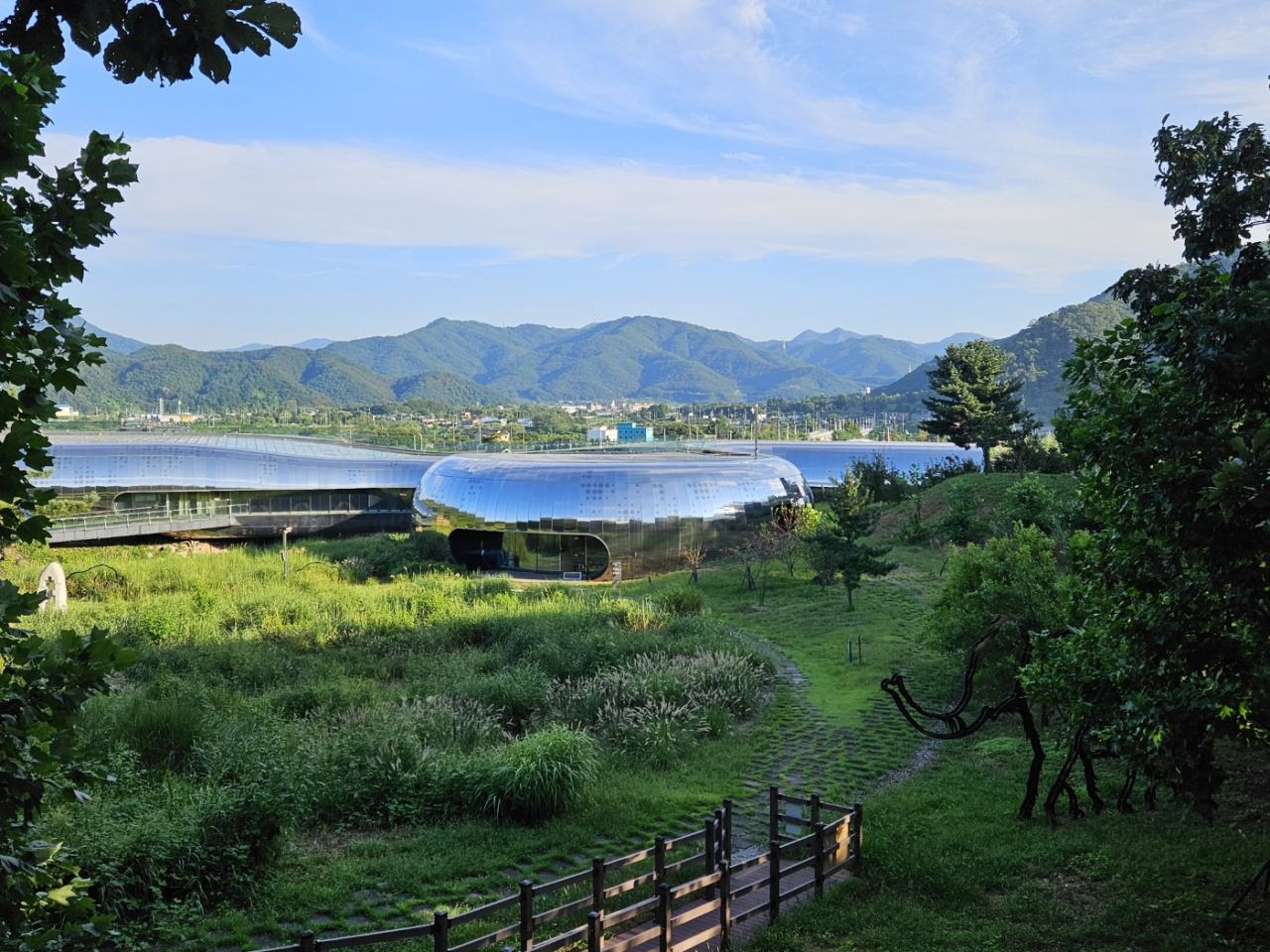 |
The Jeongok Prehistory Museum in Yeoncheon, Gyeonggi Province (Kim Hae-yeon/ The Korea Herald) |
YEONCHEON, Gyeonggi Province --- Situated on a prehistoric site of Jeongok-ri in Yeoncheon, Gyeonggi Province, the Jeongok Prehistory Museum stands as a testament to the prehistoric heritage of Korea, inviting visitors on a journey through time.
The museum officially opened to the public in April 2011 on the wider Jeongok-ri site, which was designated Historic Site No. 268 in 1979.
The site first became known to the world in 1978, when Greg Bowen, a US airman stationed in South Korea, accidentally spotted a Paleolithic-era hand ax while on a stroll near the Hantan River.
The Acheulian-like hand ax, a double-sided blade, garnered significant attention as the first discovery of its kind in East Asia. The ax is on display at the National Museum of Korea in Seoul.
Over the next two decades, numerous tools such as hand axes, hunting stones, cleavers, picks, scrapers and blades were unearthed at the site. Extensive research and ongoing excavations confirmed that the Jeongok-ri site dates back to at least 350,000 years ago.
Consequently, the Jeongok-ri prehistoric site is seen as one of the most important sites of Paleolithic culture in East Asia and a crucial research site for scholars.
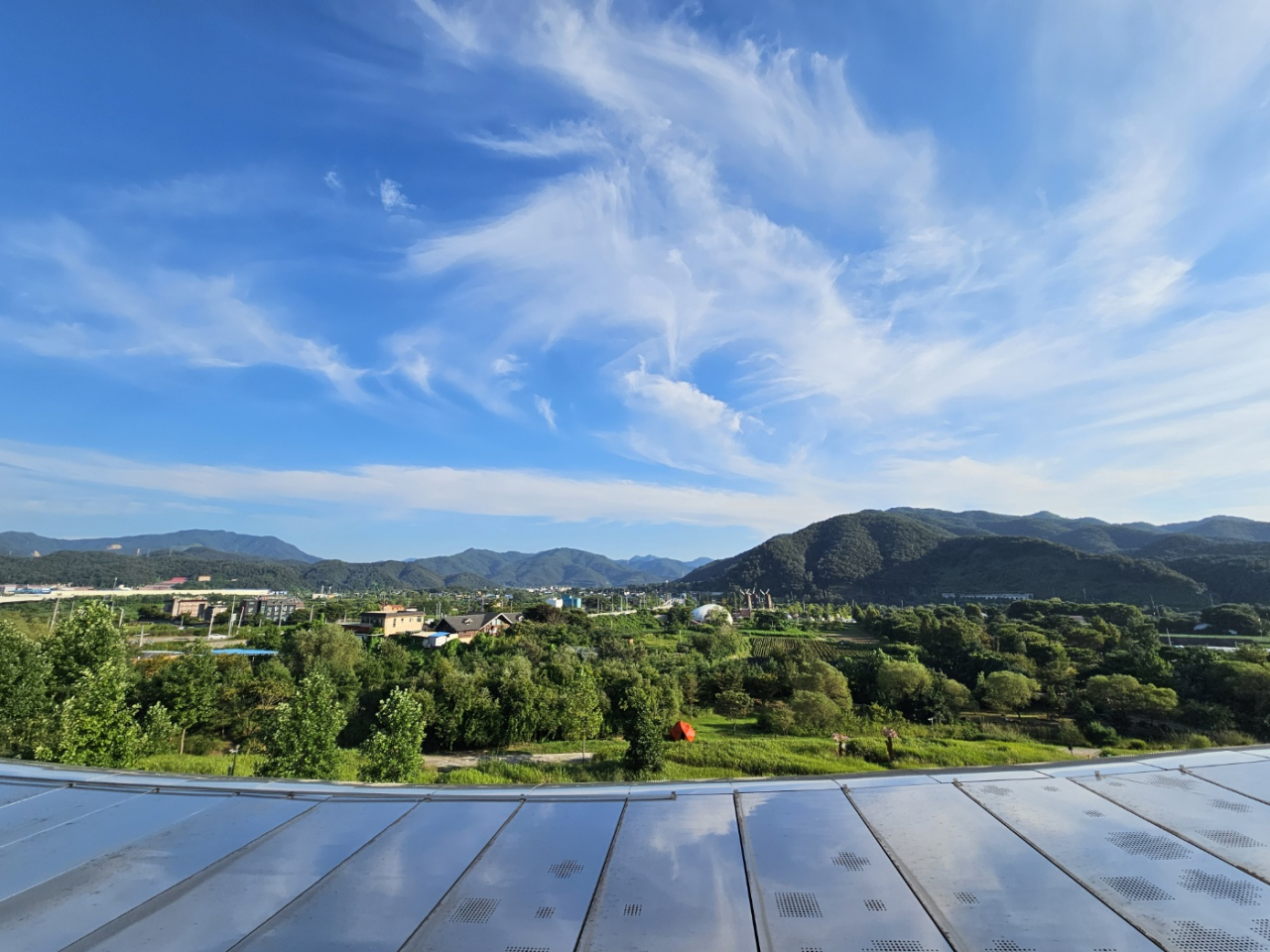 |
The view from the upper deck of the Jeongok Prehistory Museum (Kim Hae-yeon/ The Korea Herald) |
Designed by Anouk Legendre and Nicolas Desmazieres, the co-founders of XTU architects in Paris, the museum seamlessly integrates with the natural surroundings by echoing the curves of the hills and the meandering river on its shiny metallic exterior.
The museum's exhibitions center around the natural history of Yeoncheon's Chugaryeong rift valley, but explanations on prehistoric artifacts discovered in other parts of the world are included for comparison. A prominent feature of the museum is the "Great Walk of Evolution," allowing visitors to follow a timeline depicting the evolution of humans in the Jeongok region.
The displays are interactive and inviting, including VR zones in which visitors can embark on a prehistoric adventure.
Based on historical evidence, life-sized figures of hominids, mammoths and stuffed animals such as cave bears, primitive horses and saber-toothed tigers are on display, as well as replicas of late-Paleolithic era cave paintings from Cosquer Cave and Lascaux Cave in France, and the Cave of Altamira in Spain. The cave paintings found in France and Spain shed light on initiation rituals into adulthood.
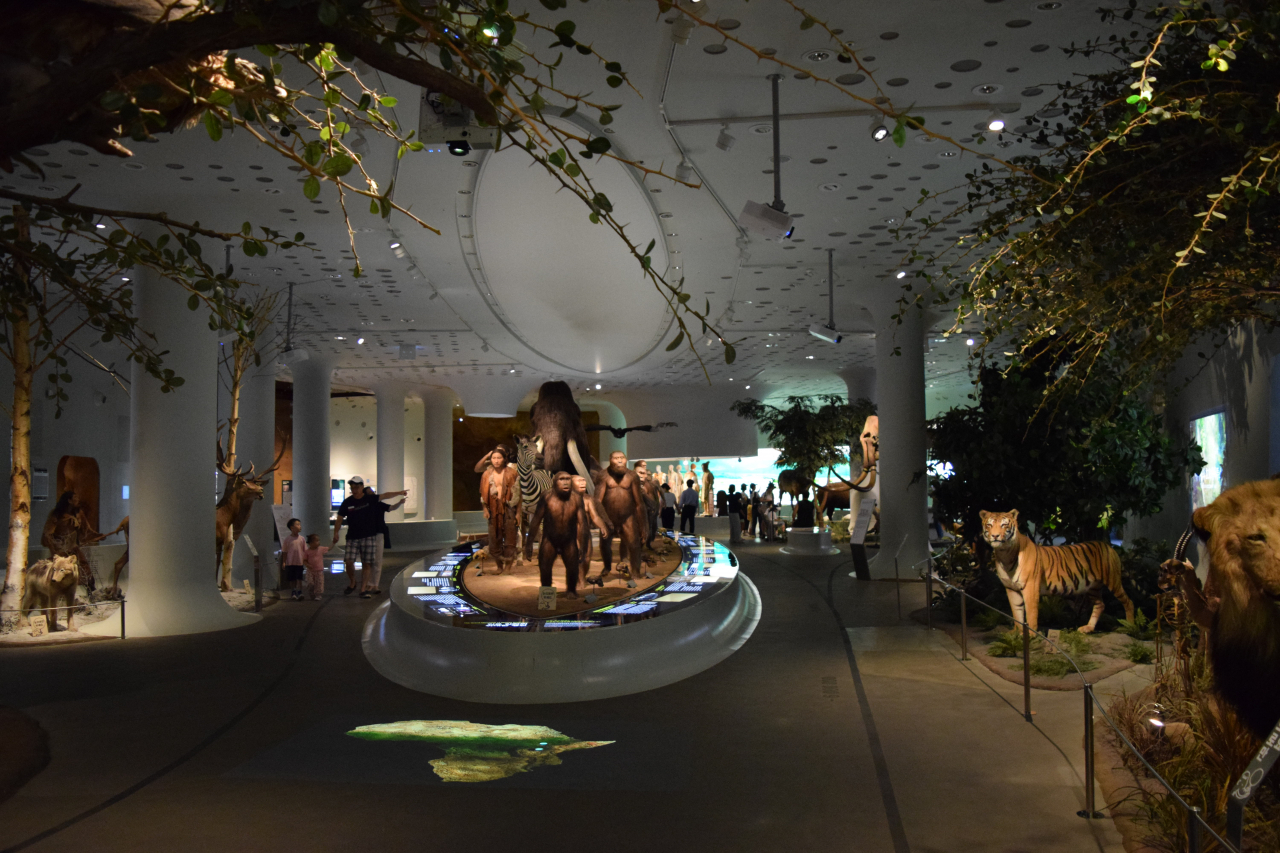 |
The "Great Walk of Evolution" section in Jeongok Prehistory Museum's main exhibition hall (Kim Hae-yeon/ The Korea Herald) |
 |
A life-sized replica of a mammoth skeleton (Kim Hae-yeon/ The Korea Herald) |
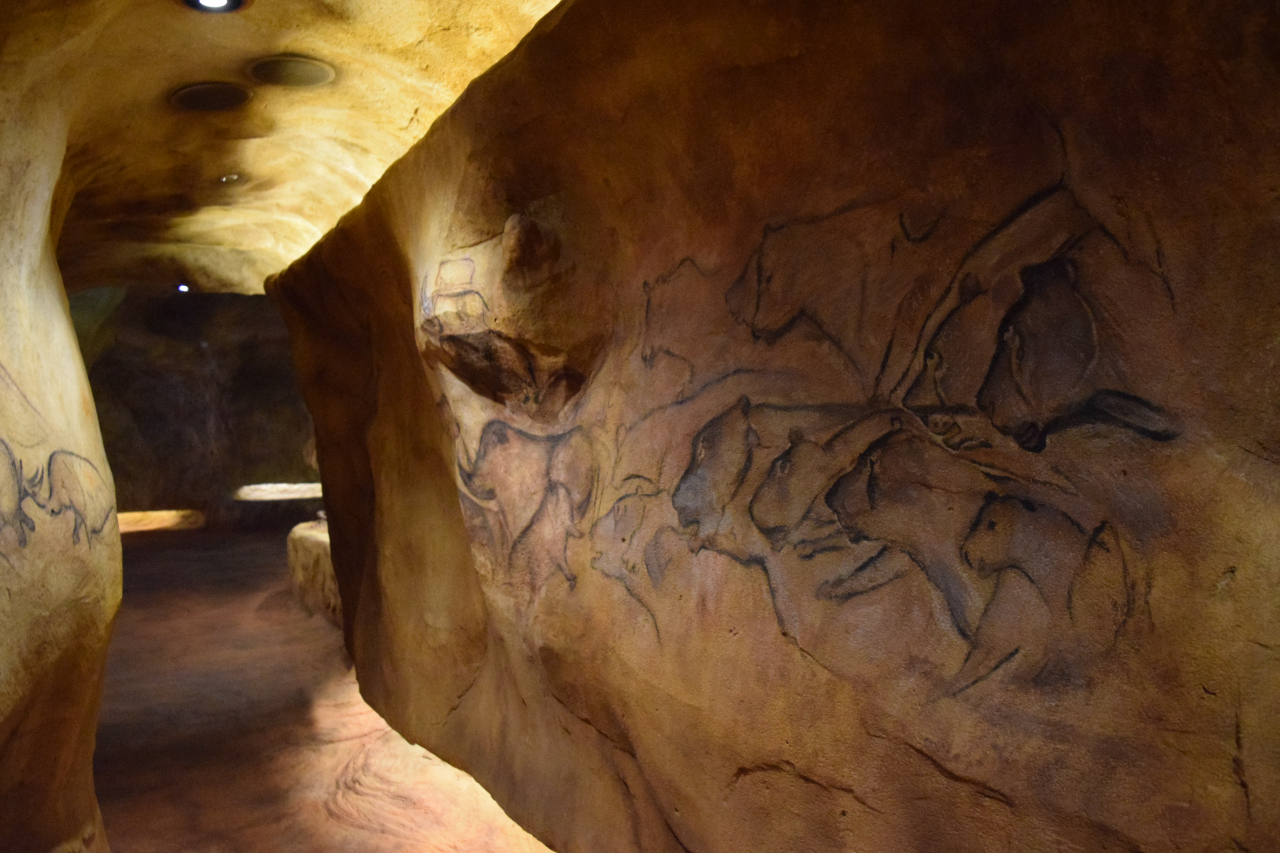 |
A replica of the Chauvet Cave painting in France (Kim Hae-yeon/ The Korea Herald) |
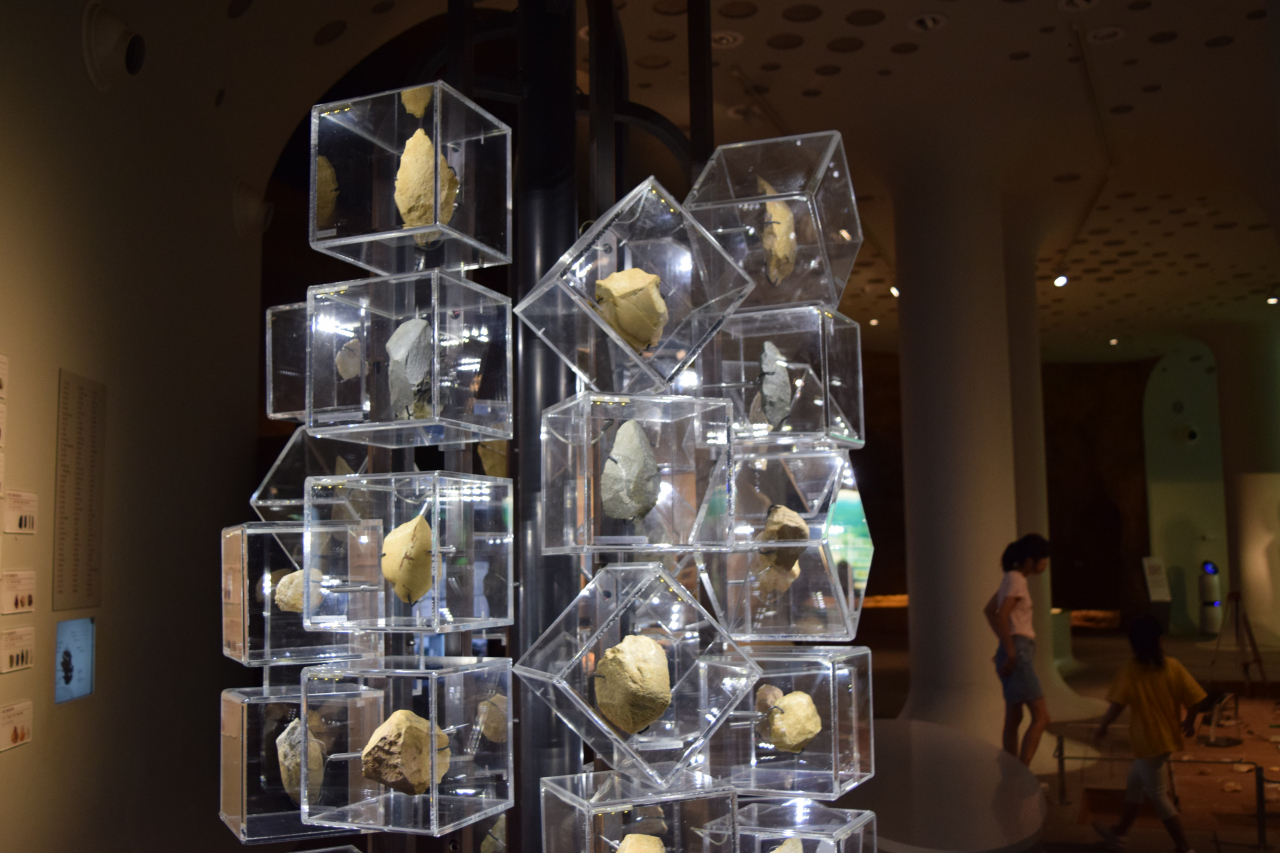 |
Hand axes discovered in the Hantan River area in Gyeonggi Province are on display at the Jeongok Prehistory Museum. (Kim Hae-yeon/ The Korea Herald) |
An archaeological excavation site of Jeongok-ri is recreated at the museum, explaining the scientific research conducted there.
At the rear of the exhibition hall, a short film depicting life in the Stone Age and Ice Age is screened regularly. After watching the film, visitors can engage in the restoration of a mammoth at the interactive media zone, which involves connecting mammoth bones.
Moreover, within the museum's passport photo zone, guests have the opportunity to capture images portraying various stages of human evolution, ranging from Australopithecus to Homo sapiens, which can then be made into photo booth-style pictures.
The vast outdoor area of the museum is also worth exploring.
Visitors can walk on the roof of the building to enjoy a panoramic view of the entire site and the surrounding mountains. The Prehistory Park, an area designed for outdoor activities, experiential programs and performances, is a notable attraction for families.
 |
An interactive activity at the museum's open hall (Kim Hae-yeon/ The Korea Herald) |
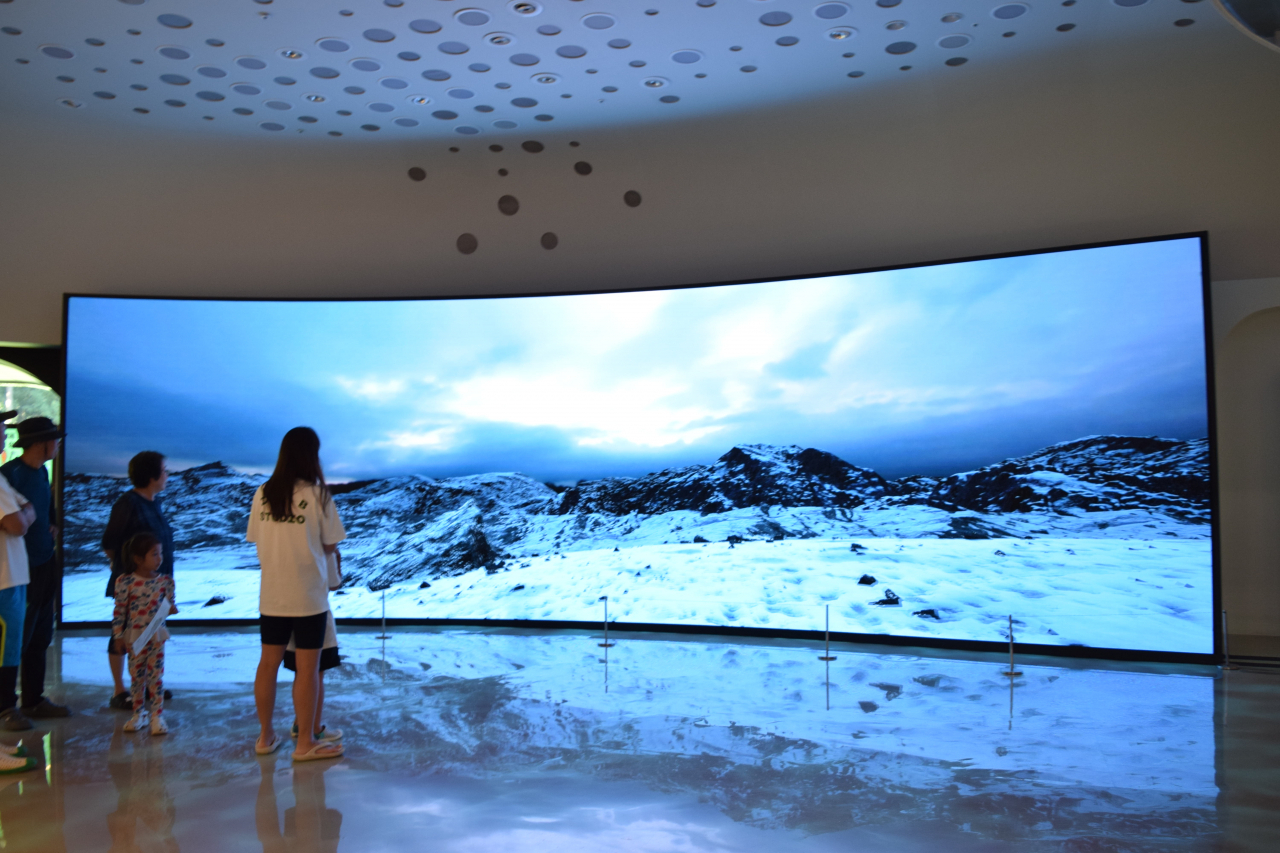 |
Visitors watch a short film on the ice age. (Kim Hae-yeon/ The Korea Herald) |
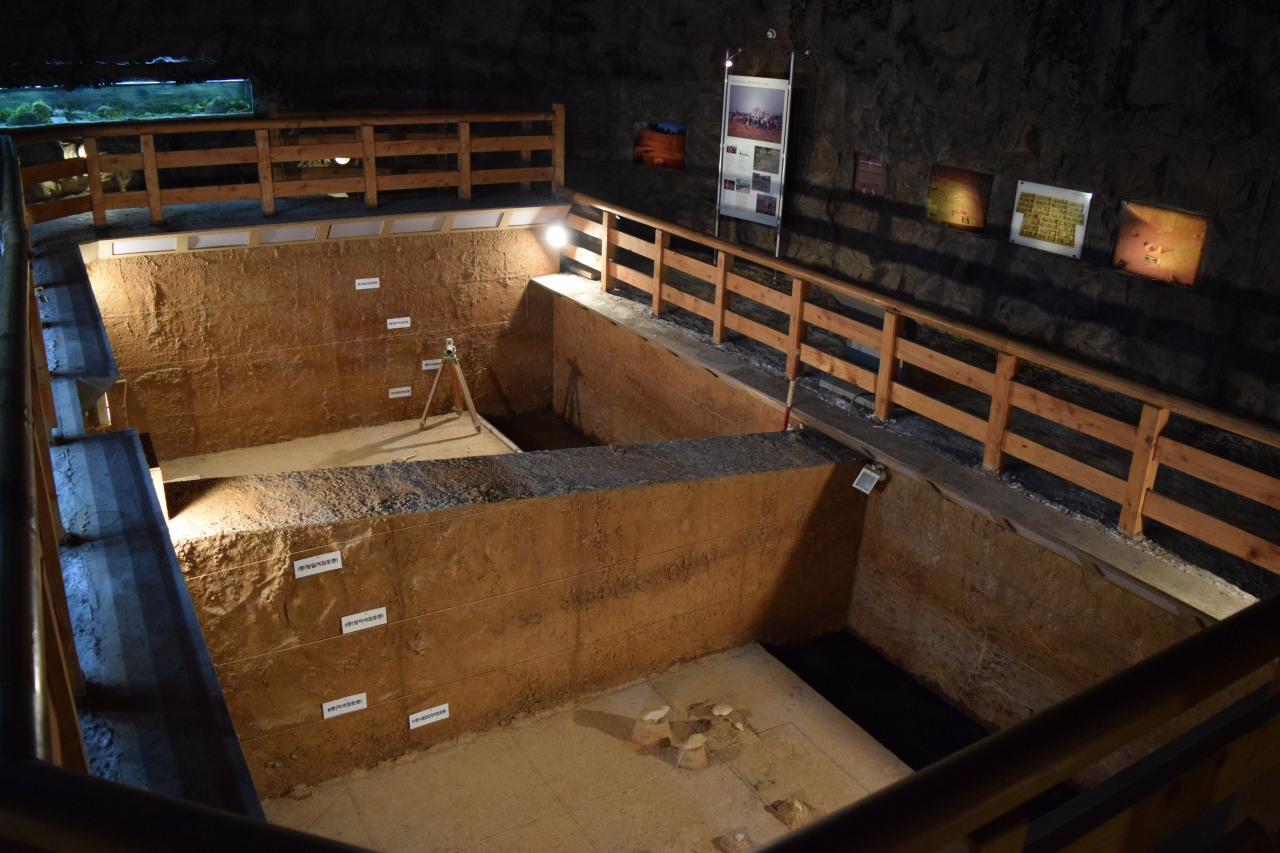 |
The Soil Surface Excavation Hall showcases soil sediments in the Jeongok-ri site. (Kim Hae-yeon/ The Korea Herald) |
The Soil Surface Excavation Hall, dedicated to the soil in the Jeongok-ri site, showcases sediments accumulated on the basalt rock base over the course of half-a-million years. Curators are available to explain the background of the site's excavation to visitors upon request.
The site also holds the annual Yeoncheon Paleolithic Festival in early May, providing visitors an opportunity to delve into Korea's paleolithic history through various games and educational programs.
The Jeongok Prehistory Museum operates from 9 a.m. to 6 p.m. It is closed on Mondays.
This is the third article in a series that introduces a variety of unique museums that focus on a diverse range of themes, from art and science to history and technology. — Ed.







![[Today’s K-pop] Blackpink’s Jennie, Lisa invited to Coachella as solo acts](http://res.heraldm.com/phpwas/restmb_idxmake.php?idx=644&simg=/content/image/2024/11/21/20241121050099_0.jpg)